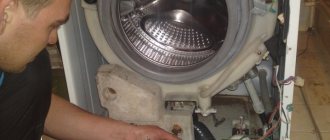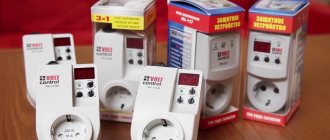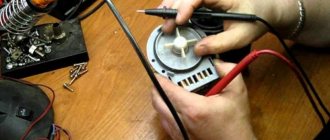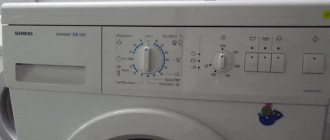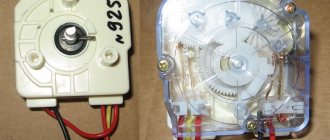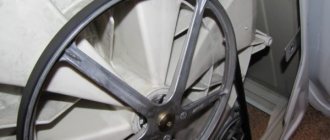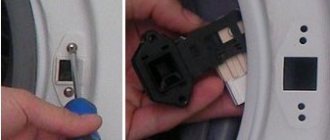The failure of household appliances almost always entails significant financial costs. Especially when it comes to large equipment - a refrigerator, electric oven or washing machine. Calling a technician just to determine the breakdown and identify its causes is usually paid for. And then there is a call for a cargo taxi, delivery of household appliances to the workshop, etc. In this article I will describe the most common washing machine malfunctions, their probable causes, as well as how to fix them yourself.
Regardless of the manufacturer and model, all typical washing machine breakdowns can be summarized in the following list:
- Does not drain water during operation or spinning;
- Does not turn on - the control panel does not light up;
- Does not heat water;
- Leaks;
- During the spin cycle, the program freezes or the function does not work;
- The loading hatch does not open.
Let's look at the listed washing machine malfunctions, their causes and elimination in more detail.
Does not drain water during operation or spinning
If you notice that the water does not drain for a long time during the spin cycle or the standard wash cycle, interrupt the wash program and set the forced drain function. If this does not have any effect, then before you panic, you must first check the drain hose. The reason may be severe bending or compression. If everything is in order with the hose, then the reasons may be as follows:
- Clogged filter and/or pipe between the tank and drain pump;
- Clogged sewer siphon where the drain hose is connected;
- Failure or clogging of the drain pump.
Blockages are cleared quite quickly. Only when you open the filter will water start pouring out of the tank. Prepare a basin and rags to combat flooding.
Clean the drain filter
If the drain pump fails, the situation is worse, but not much. With each wash, water is drained from the tank at least three times, for a total of about 30 liters. If you do not systematically clean the drain filter and use strong (aggressive) detergents, the pump can fail quite quickly.
After all the gaps have been eliminated, it is necessary to check whether the pump has failed or not. The washing machine tank fills with water and the “drain” mode is activated. Water should come out of the drain hose under pressure. If the water flows very weakly, almost by gravity, the pump needs to be changed.
Replacing the pump
Depending on the brand, you can remove the drain pump from the front or bottom
Bottom view
We order a similar pump from the market or on a website that sells spare parts for household appliances and install it in place.
The device of washing machines
Few owners of a washing machine think about its design and operating principles. However, in order to independently repair a faulty automatic washing machine at home, you need to know its internal structure and the purpose of the main components and parts.
Control
The main part in a modern washing machine is the control module. It is with the help of the control board, which is a metal substrate with many resistors, diodes and other elements, that all washing processes take place: starting and stopping the machine, heating and draining water, spinning and drying clothes.
The module receives information from special sensors about how to act at a given time. The machine uses three sensors:
- pressure switch - shows the water level in the tank;
- thermostat - determines the water temperature;
- tachometer - controls the number of engine revolutions.
The control module is not only the most important, but also the most expensive part of the washing device. If it fails, the machine begins to act strange or completely refuse to do its job. Without special skills in repairing electronic equipment, you should not repair the board yourself. Most often, this part is completely changed or sent to professionals for repair.
Execution devices
Having received the appropriate washing instructions from the owner of the machine (mode, water temperature, the need for additional rinsing, etc.), and having checked the condition of the sensors, the control module gives the necessary orders to the executing mechanisms.
- Using a special UBL device, the loading hatch door is blocked. The machine will remain in this state until the end of the wash, and only 2-3 minutes after draining the water, the control module will signal to unlock the hatch.
- Water is supplied through the valve into the tank of the device. As soon as the pressure switch shows that the tank is full, the water supply will automatically stop.
- A tubular electric heater (TEH) is responsible for heating the water. From the module it receives a signal about the turn-on time and the temperature to which it is necessary to heat the water in the tank.
- The machine’s engine, which is connected through a belt or directly to the drum pulley, is responsible for rotating the drum. The moment of starting and stopping, as well as the rotation speed, is controlled by the control module.
- Waste water is drained using a pump. The drain pump pumps water out of the drum and sends it into the sewer pipe.
Such seemingly simple mechanisms, controlled by an electronic module, perform all the work of the washing unit.
Washing machine tank
The tank is a sealed plastic container that occupies most of the body of the washing machine. Inside the tank there is a drum for loading laundry and a heating element.
The washing machine tub consists of two parts connected by metal brackets or bolts. Water is taken in and drained through special pipes connected to the walls of the tank. To reduce the vibration that occurs when the drum rotates, the upper part of the tank is attached to the machine body with springs, and the lower part with shock absorbers.
The drum is made of high quality stainless metal. By rotating in it, the laundry is washed and wrung out, completely free of dirt. A rubber cuff located between the tank and the drum ensures the tightness of the structure.
Doesn't turn on - control panel doesn't light up
It happens quite often that after power surges the control panel and/or indicators do not light up. With a high degree of probability, this means that the central control board has failed. Such modules are quite easy to repair if you understand electronics. All washing machines are equipped with control modules with switching power supplies.
Control module
The most common cause of control module failure is failure of capacitors in the cold circuit. A burnt capacitor can be easily detected by swelling of the upper surface.
Capacitor
If such swelling is detected, the capacitor simply needs to be replaced with a working one. Troubleshooting the board in a washing machine is best done only if you are 100% sure of the result.
If the washing machine does not turn on at all, then the cause may be a burnt-out power filter. This is not the filter with a glowing button and many sockets, but a device that blocks interference from the washing machine - FPS (anti-interference network filter).
Network filter
It is checked simply; the tester rings the contacts at the input and output. If there is no contact, the FPS needs to be replaced with a new one.
There is one trick. If it is not possible to buy and install an FPS, you can connect the contacts that go directly to it. In this case, the washing machine will work without problems. But then, when washing, it is better to turn off thin electronics in the apartment: computers, televisions, etc. Since the washing machine will already create interference in the electrical network.
Bypass FPS (Not recommended)
The reason for the malfunction of the washing machine electronics is poor quality of electricity - voltage surges. Despite the widespread belief that connecting a washing machine to a separate RCD can protect it, this is not the case. The only reliable protection is to connect the device through a switching voltage stabilizer. If it is not there, then after washing, simply remove the power cord and sockets.
How to carry out smart diagnostics
To understand how to make smart diagnostics, you need to understand its operating principle. Operation is ensured using a special program built into the LG machine. You will need a phone number for feedback.
It receives signals from the washing machine thanks to the built-in NFC antenna. Then they are received through a microphone or a special program.
In the first case, the information is processed by the service center operator, and in the second, by the smart diagnostic program itself, downloaded into the smartphone.
Using the Smart Diagnostics feature is quite simple. All you need is a phone. There are two ways to use the smart diagnostics feature:
- Method 1 – intended for users with regular phones;
- Method 2 – suitable for smartphone owners.
In the first case, the Smart Diagnostics function is used as follows:
- Connect your LG machine to the network.
- Dial the LG service center number (you can see it on the warranty card).
- Perform actions in accordance with the operator’s prompts (you will need to press the indicated buttons one by one).
- Place the phone side with the microphone on the SmartDiagnosis inscription.
- The operator processes the sounds made by the LG washing machine and voices the problem or sends information to the technician.
For smartphone owners, the procedure will be completely different. To use the smart diagnostics option, you must:
- Connect your LG machine to the network.
- Connect your smartphone to Wi-Fi during diagnostics.
- Download a special program called LG Laundry&DW to your phone.
- Enter the model of your LG washing machine.
- To read the information, bring the smartphone and turn the display towards the washing machine.
- Perform actions following all points.
- The LG washing machine is analyzed within a minute.
- The user receives recommendations regarding how to resolve his problem.
- If the LG washing machine is under warranty, the service center will send a specialist.
LG Laundry&DW is available on Google Play. Suitable for all modern OS. To install, you must select the official application. The menu on the phone will be in Russian, and the test result will be in English.
The smart diagnostic program itself deciphers the error code and provides possible ways to eliminate it.
Note! Before checking using smart diagnostics, you must read the operating instructions for the washing machine. This will help you quickly navigate when finding a fault.
Doesn't heat water
If the washing machine does not heat the water, the reason is almost always a faulty heater - heating element. Failure of heating elements is a fairly common phenomenon; most often it occurs due to the formation of scale in regions with hard water.
How to determine a malfunction of the heating element in a washing machine? Select a high temperature wash program and after 15 minutes place your hand on the glass hatch. If the glass is cold, the machine does not heat the water. Since the heating element itself cannot be repaired, it must be replaced with a new one in any case.
Replacing the heating element is quite simple. To do this, turn the washing machine on its side to gain access to the heating element from below. On some models it is poorly positioned and you may need to remove the outer metal casing. After access to the heating element is gained, the contacts are disconnected and the central clamping nut is unscrewed. It also serves as a ground terminal clamp.
Drum spins too fast or too slow
Here we will look at a question not related to the spin cycle. You can read below about diagnosing a washing machine malfunction when the spin cycle does not work.
- The drive belt is weakened - when this belt is loosened, it begins to slip and idle, while the drum may either not rotate or rotate at low speed and not gain the required speed. Remove the back cover and replace the belt with a new one.
- The motor brushes are worn out - if the motor brushes are worn out, their contact with the commutator is disrupted, which leads to a loss of power from the engine itself. You need to replace them with new ones.
- The motor winding is faulty - if one or two windings on the motor are burned out, it will still continue to rotate, only with a large loss of power. In this case, the drum will not be able to rotate quickly. Here it is necessary to check the engine for integrity and replace if necessary.
- Problems with the tachometer - a tachogenerator is installed on the engine, which measures the number of engine revolutions. If the signal from it is incorrect, the engine speed may “jump”. Most often, the reason lies in the fastening of the tachometer. You need to check the tachometer for operation, and also check its fastening.
- Malfunction of the control module - the control module may fail and begin to incorrectly “set” the drum rotation speed. Contact a washing machine repair service.
Leaking
If a puddle forms under the machine during washing, you need to check the following places for leaks:
- Supply hose;
- Loading hatch cuff;
- Pump, filter and drain pipe;
- Tank seal;
- Retractable powder dispenser and water supply tubes.
Inlet hose
Connection points for the inlet hose - you need to tighten the nut more tightly, but without using a wrench.
Drain pump with drain pipe
Leaking from under the bottom of the washing machine. We lay it on its side and check all the connections between the drain pump and the filter and the drain pipe. The clamps need to be tightened more tightly. If the pipe material has lost its elasticity, it is better to replace the part completely. But as a temporary measure, for 1-2 washes, the seat can be lubricated with some kind of sealant, then install the pipe and tighten the clamp.
Tighten the clamps
Very often, during washing, foreign sharp objects fall out of pockets, which can damage the cuff near the hatch. In this case, there is only one way out - simply replace it. The cuff is made of silicone and cannot be repaired.
Cuff damage
Replacing the cuff
This type of malfunction is especially likely in vertical washing machines, since they have a large cuff area.
For a vertical cuff, replacing the cuff is a rather troublesome procedure, but does not require special skills, only accuracy. The plastic retainer that holds the cuff on a metal or plastic body does not provide for the possibility of removal or reuse, so it must be carefully cut off or removed in another way (nippers, pliers).
The cuff itself must have a special profile that is put on the protrusion - the seat, until it stops. When installing, pay special attention to the markers. Both on the cuff and on the body of the washing machine there are arrows, and in the cuff there are additional protrusions for fasteners. They need to be carefully placed in the right places.
Markers must match
When purchasing a spare cuff, make sure that the repair kit includes clips.
Principle of operation
Automatic washing machines operate according to a specific algorithm. Today in our article we will look in detail at the principle of operation of the device.
- First of all, to start work, you need to carry out the switch-on procedure. The machine must be connected to the network using a special cable.
- Next, load the dirty laundry into the machine drum. This procedure can be carried out in several ways, depending on what type of loading the machine has (front or vertical). In addition, the load of laundry should be carried out in accordance with the volume of the drum (2, 4, 6 or more kilograms).
- The next step is to add detergents (powder, conditioner, etc.). For this purpose, special compartments are provided in the outer casing of the device.
- Now you need to close the washing machine door tightly and start the wash.
- The most important step is choosing the appropriate mode. It depends on the amount of laundry you load, its color and type of fabric. There are several washing modes: delicate, intensive, manual, quick, etc.
- After the actual washing procedure begins, the pump in the device will start working. Thanks to this device, water enters the machine through specially designed round holes (you can see them on the drum).
- As soon as the water reaches the appropriate level, the liquid supply will stop and the actual washing procedure will begin.
- From the special compartment where you previously poured the powder, water will wash out the detergent, and it will fall into the drum of the machine. Wet laundry is saturated with powder and cleaned thanks to the rotational movements of the drum. In addition, additional water may be added at this time.
- Also, during the wash, the rinsing and spinning procedure will occur (provided that the mode you have chosen allows for these processes). The rinsing process is accompanied by pouring clean water into the drum - this happens several times. At the same time, such an important element of the washing machine as the pump is included in active work. The spinning procedure occurs due to centrifugal force.
- After the wash cycle you have chosen is completed, the water will go down the drain.
- After the wash is finished, the washing machine will turn off automatically. All you have to do is turn off the power.
- After the washing has stopped completely, the front door will remain locked for a few more minutes. It will then open and you can remove the laundry.
During the spin cycle the program freezes or the function does not work
The reasons for the lack of spin can be either mechanical or software at the level of control electronics. To exclude a breakdown at the electronics level, you need to run the spin function separately and see if fault codes appear on the control panel of the washing machine. If the machine has a touch control and a large screen, then a failure of the function will be accompanied by the symbols “ERROR”, followed by a digital error code. The analog control system is a little more complicated. It is represented by indicators that, when an error occurs, begin to glow or flicker.
One of the most common reasons for the failure of the spin function is the failure of the tachometer sensor or a break in the wires transmitting the control signal from the tachometer to the engine. In this case, DIY repairs seem to be quite problematic. Since it is necessary to have professional testing equipment.
Tachometer sensor
Mechanical causes of failure or poor performance of the spin function can be eliminated independently:
The belt transmitting torque from the motor to the drum has stretched. This problem occurs especially often in compact (narrow) washing machines.
Drive belt
Wear on engine brushes occurs during intensive use over a long period of time. At the same time, the washing machine works quite successfully at low speeds, but for spinning (maximum speed) the power is no longer enough.
Remove the electric motor
Remove the brushes
To replace the brushes, you need to remove the engine and find the brush holders on it (they may look different for different models), remove one of the brushes and purchase similar ones in the store. The need to replace brushes can be determined by the size of their protrusion from the brush holder. If at least one of them has less than 7 mm, then both cheeks need to be replaced.
Models with smart diagnostics function
Almost all modern LG washing machines support the Smart Diagnosis program. The equipment has many useful functions, which ensures maximum comfortable use.
Currently, more than 150 of the company’s washing machines can be inspected using a smartphone. Let's look at popular models that allow you to use smart diagnostics.
- LG F1296ND4. The narrow washing machine is great for home use. The drum is designed to wash 6 kg of laundry. It is possible to spin things at 1200 rpm. Users are offered 13 operating modes. The electronic controls are intuitive and uncomplicated. The washing machine is free-standing and easy to install. The low noise level is considered a big advantage. The “6 movements of care” technology has been implemented. Thus, the drum can rotate in different ways, which ensures high-quality and gentle removal of stains from different types of fabric.
- LG F-10B8ND. Narrow washing machine with direct drive. The function of different rotation of the drum depending on the type of fabric and the intensity of dirt is integrated. The equipment has a front loading type and is designed for 6 kg. It is worth noting that the model operates quite quietly. The manufacturer offers 13 washing modes, including separate programs for duvets and children's clothes. There is a “Health Care” wash option that removes various allergens from the fabric. Things are spun at 1000 rpm. As a result, the clothes are slightly damp and the fabric fibers are not damaged.
- LG F-1096TD. A fairly spacious washing machine allows you to load up to 8 kg of laundry. 13 washing modes are offered, including daily and quick. The washing machine is suitable for a family with a child; there is a separate program for children’s clothes. There is an additional mode that smooths out small wrinkles on clothes.
- LG F-12U2HBS. Washing machine with direct drive and steam function. Things are spun out at a maximum of 1200 rpm. As a result, the clothes are practically dry and can be ironed immediately. The drum is designed to wash 7 kg of laundry. There are 14 operating modes, including a separate one for dark fabrics. Its peculiarity is that it is guaranteed that soap stains from the powder will not remain on clothes.
- LG F1089ND. This washing machine is characterized by economical power consumption. At the same time, you can wash up to 6 kg of laundry. In standby mode, the equipment does not consume energy at all. The washing machine belongs to the narrow category, with a depth of only 46 cm. Many proprietary technologies are integrated, including the EcoHybrid drying function and TrueSteam steam. There are “6 care movements” that allow you to most effectively clean dirt of any intensity from different fabrics. The machine has 13 operating modes.
- LG TW206W. The mini-machine is designed for daily small washing. The drum is designed for only 2 kg. The controls are intuitive and touch. The washing machine has Wi-Fi support. The device has 7 programs, including a separate mode for washing underwear. It is possible to use loaded cycles. The model is characterized by low noise and vibration levels.
- LG F2H5HS6W. The drum is designed for 7 kg of laundry. Clothes are spun at a maximum of 1200 rpm. Steam technology has been implemented, which is active during the “Baby Clothes”, “Hypoallergenic”, “Cotton + Steam” cycles. As a result, the clothes are delicate and soft. In total, users can use 14 washing modes, including quiet and everyday. You can also use your own program.
Modern LG washing machines have many useful features that allow you to clean your laundry more efficiently. Innovations and technologies require constant monitoring.
In view of this, the advent of smart diagnostics is very useful. Even if the system fails, you can find out the reason yourself.
Source: https://stroy-podskazka.ru/stiralnye-mashiny/smart-diagnostika-lg/
Extraneous knocking noises are heard during operation
As a rule, extraneous noise appears during spinning, when the engine is running at maximum speed. There are two main reasons for the appearance of strong vibration and extraneous noise:
- Bearing wear;
- Wear of shock absorbers.
On average, bearing operation is designed for 7-10 years. In order to determine problems in the bearings, you need to take the drum with your hand and slightly rotate it back and forth and from side to side. In this case, no extraneous sounds should be heard, and the play between the edge of the drum and the cuff should be minimal. If at least one of the signs is present, the bearings must be replaced. This is a rather labor-intensive and complex repair of a washing machine malfunction, and not everyone is able to do it with their own hands.
The process includes complete disassembly and removal of the tank and drum, pressing out the bearings and seal, installing new bearings, and then reassembling them.
Spinning up the tank
We remove the drum enclosed in a sealed tank from the machine. Unscrew the tank, then remove the drum
We take out the drum
As a rule, there is a significant limescale deposit on the drum. Clean it with WD-40 rust remover.
Pressing out the bearings
Carefully remove the old bearings. This process is called pressing out. This must be done extremely carefully so as not to damage the shaft tip. It is better to use a rubber hammer.
Installing new bearings
We install new bearings on the seat, having previously lubricated the niche with lithol. Be sure to install a retaining ring on top. When reassembling the tank, be sure to use silicone sealant.
The second common cause of knocking and severe vibration is wear of the shock absorbers. Shock absorbers cannot be restored or repaired, and if they break, only replacement will be required.
Replacing shock absorbers
Diagnosing problems using information codes
Modern washing machines are equipped with electronic control units (hereinafter also referred to as ECUs), which can localize damage and display information about the presence of a particular problem in the form of a code. This self-diagnosis function helps in repairing faults, most of which owners can fix themselves.
The PE fault code in an LG machine informs about a possible malfunction of the water level sensor in the tank
In a SM without a display, error codes are deciphered by blinking indicators. Unfortunately, the coding of faults varies from manufacturer to manufacturer. The list of main failures of washing machines and the corresponding information codes are usually indicated in the operating instructions.
The following video will tell you about the error codes of washing machines from well-known manufacturers - Indesit, Ariston, Samsung and LG:
The loading hatch does not open
The loading hatch is blocked for the entire washing process. The blocking process is controlled by a ceramic resistor. After the program has completed all the functions and the resistor is no longer supplied with power, it persists for 1-2 minutes and only after that the blocking plates take their original position and the hatch can be opened.
One of the possible causes of a malfunction of the washing machine locking mechanism is constant voltage drops. They can lead to wear of the bimetallic plates or simply burn the contacts.
Burnt lock contacts
In this case, the lock must be completely replaced. You can remove it as follows:
- We bend the cuff, gaining access to the lock;
- Unscrew the two screws;
- Disconnect the contacts.
The lock has been removed and can be replaced with a new one.
Replacing the lock
Summing up
The information and step-by-step repair instructions presented in the article are not the ultimate truth. There are many models of washing machines that have their own layout. In this case, the location of parts for repair or replacement must be determined according to the diagram attached to the data sheet. But if you think that you do not have enough skills or knowledge, then it is better to contact a specialist.
If you have troubleshooted any problems with your washing machine yourself, please share your experience in the discussion of the article.
